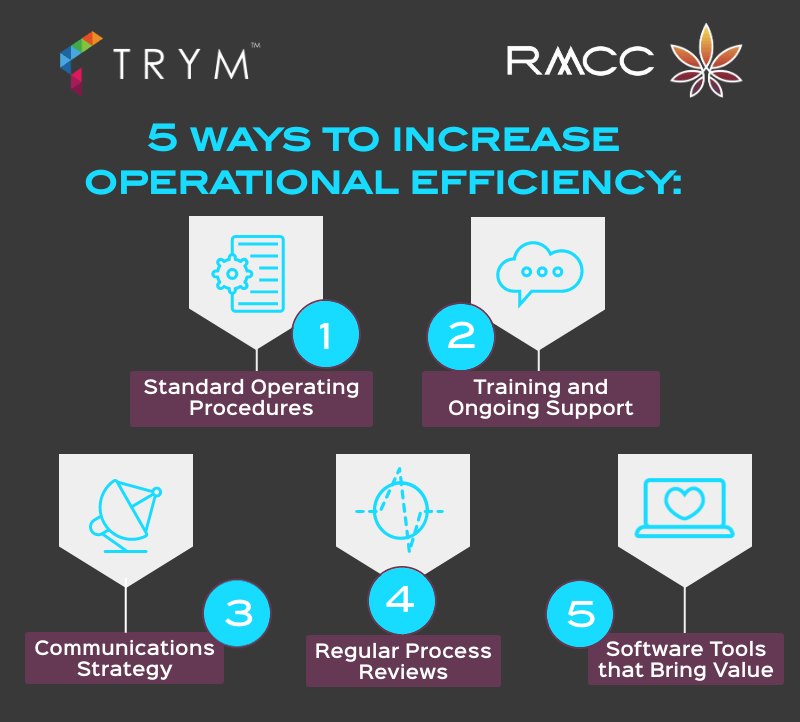Committee Blog: Time to Hire

The road to opening a licensed cannabis business is a long one. You have managed to navigate through a competitive and complex licensing process. You have convinced your local community to give your company a shot. You have beautified the area surrounding your business. You have secured your supply chain, and you even opened a special account at a cannabis bank to deposit all that cash. You have hired armed security, and even though you are paying the company 3X what you’re making, it’s okay because you and your staff are safe. You even survived the facility build-out, and hopefully, you have about six months of capital. What an accomplishment. Bravo! You did it! Wait… you need a team to help you operate this beast. Time to hire!
I heard someone say, ‘Great things in business are never done by one person. They’re done by a team of people.’ I would guess that if you have made it to the finish line, you’re likely to already have a team. Now it’s time to expand that team. As if the odds aren’t already stacked, in the fast-paced world of cannabis retail, turnover rates are hitting a staggering 55% within a year, per headset.io as of November 2023. I learned about this very early on when I began my research. I needed to know why and what I could do to avoid more than half my staff quitting within the first year. There were some common factors that led to employee attrition. I was a bit surprised to hear that pay wasn’t a top factor. What I learned was budtenders, in particular, didn’t feel the company provided any kind of staff development. Many instances described a poor management staff, and many felt unappreciated and overworked.
When we started this thing, it was important to make sure we could create opportunities for others. I’ve worked for both big and small businesses, some corporate and some non-corporate. I have had some good managers and some bad ones. I learned something from each job I’ve held. I vowed to make sure my staff never looked at our managers and our company and put us in the bad category. Trust is earned, and leadership can never be forced. I opened doors on April 22nd, and we hired 21 part-time employees. I will follow up in 12 months to see if I beat the odds. I’ve done it before.
It was through the NCIA network I met Carlo, and he had me go through a workshop. What I learned was, first, we needed to ask ourselves: What are our principles at Banyan Tree? My team is amazing, and we have been together so long we trust in each other’s expertise to maintain a harmonious environment. We want to make sure the staff feels the same way. So collectively, we created a list of principles. Next, we posted the job position. The response was overwhelming. Within 24 hours, we had close to 500 applications. We narrowed that down to 50. We scored the candidates based on their work experience and the video response they provided, aligning with our principles. Next, we scheduled the interviews. We called each candidate to share what they could expect during the interview. We sent them the list of our principles. We would be conducting the interview using the S.T.A.R. method: Specific, Task, Action, Result. That means the questions we ask will all be related to their work experience. We expect the answers you give to describe an experience that uses the S.T.A.R method response. It really helps us get to know the candidates during the interview, and you can tell someone is being genuine when they can recall an experience they had while working at previous jobs. There were about 21 of those interviews that went on for a full hour. We hired 21 amazing people. They all feel like they are part of something special. It’s my job to keep my promise.
It’s important to continue developing and educating the staff to help them get better at their skill. It is necessary to provide them with the tools they need to perform their job. Stuff like scanners and POS systems and card readers need to work. Technical issues disrupt the flow, but that’s controllable. Communication and trust are key. Without it, you’re doomed. Appreciation and praise go a long way. We need customers to stay in business, but we can’t do business without staff. My philosophy is that my employees are everything. As long as they love their job, our guests are going to reap the benefits.
The Cannabis Risk Management Series: Cannabis Risk in Retail – The Thorny Issue of Theft Claims

Welcome back to the second chapter of our insightful Cannabis Risk Management series from Valerie Taylor with NCIA Blooming Member The Liberty Company Insurance Brokers. In our inaugural blog, we meticulously examined the art and science of cannabis cultivation, dissecting the unique risks and unveiling strategies to safeguard your valuable assets. Now, our expedition leads us to the dynamic retail sector, where the shadows of theft claims cast a challenging hue on the landscape.
The Nuances of Cannabis Retail Risk
Cannabis retail, often hailed as the face of the cannabis industry, pulsates with its own set of challenges, and at the forefront is the persistent threat of theft claims. In this segment, we delve deep into the intricate risks associated with cannabis retail, emphasizing the need for a robust risk management strategy.
1. Theft Beyond Products: Safeguarding Operational Vitality
While the theft of cash and actual cannabis products remains a primary concern, the spotlight extends to the vulnerability of operational assets. Tangible tenant improvements (displays, lighting, vault, and security systems), and other essential equipment, constitute not just commodities, but the operational pulse of a cannabis retail space. The financial ramifications of losing such assets extend beyond the immediate value of the stolen item, potentially disrupting the entire business operation.
2. Security Measures: Beyond Conventional Safeguards
Protecting against theft demands a proactive stance that transcends traditional security measures. To fortify your retail space, embracing cutting-edge technologies becomes imperative. Smart safes, equipped with biometric access and RFID tagging for inventory offer significant theft deterrence of cash. In general, they can contribute to a seamless inventory management system, minimizing the impact of potential theft incidents.
3. Advanced Surveillance Systems: The Eyes and Ears of Security
Enhancing security measures involves a comprehensive approach, and advanced surveillance systems play a pivotal role. Beyond conventional CCTV, modern systems with facial recognition, real-time monitoring, and integrated analytics provide a more sophisticated layer of defense. These technologies not only deter theft but also offer valuable insights for ongoing risk management.
Mitigating Theft Risks in Cannabis Retail
1. Community Engagement and Public Awareness: Forging Collective Vigilance
Effective theft prevention extends beyond the physical boundaries of the store; it involves creating a community-driven shield against potential threats. Establishing strong bonds with the local community can serve as a natural deterrent. Positive relationships and community engagement foster a sense of shared responsibility for the safety of the retail space, creating a formidable barrier against potential thieves.
2. Employee Training and Incentives: Fortifying the Front Lines
Empowering your staff with the skills and knowledge to identify and prevent theft is a cornerstone in fortifying your retail space. Implementing comprehensive training programs that educate employees on recognizing suspicious behavior, coupled with incentives for maintaining a secure environment, forms a powerful defense strategy against theft.
3. Insurance Tailored to Retail Risks: Beyond Standard Coverage
While standard insurance policies offer a foundational level of coverage, the dynamic nature of cannabis retail necessitates a bespoke approach. Collaborating with a seasoned insurance advisor specializing in cannabis is not just advisable, but paramount. A tailored insurance policy for retail should go beyond protecting the products; it should encompass the essential equipment components for daily operations, ensuring a comprehensive shield against potential financial losses.
4. Data-Driven Risk Analysis: Navigating the Digital Landscape
Harnessing the power of data is a crucial aspect of modern risk management. Utilizing data analytics and monitoring tools allows retailers to identify patterns, potential vulnerabilities, and areas of improvement in their security infrastructure. This data-driven approach not only aids in theft prevention but also enhances overall operational efficiency.
As we prepare for our next exploration into the distribution sector, where we’ll unravel the complexities of risks involving theft, auto incidents, and more, I encourage you to delve deep into the intricacies of cannabis risk in retail. Stay tuned for a wealth of insights and strategies to navigate the multifaceted challenges at every stage of your cannabis business journey.
For more information, please reach out to Valerie Taylor, Vice President (National Cannabis Practice Leader), Liberty Company Insurance Brokers.
Member Blog: 4 Budtender Onboarding Tips To Help Keep You Compliant

by Tommy Truong, KayaPush
A recent survey by Headset.io found that 55% of budtenders leave their jobs within the first year of employment.* But why?
Some believe improper onboarding could be a culprit.
First impressions matter – and improper onboarding can leave budtenders feeling underprepared and unappreciated. Moreover, budtenders who don’t receive proper compliance training might be terminated due to compliance infractions and could even be at personal risk for their errors.
Luckily, by setting up solid budtender onboarding SOPs that put compliance first, you are more likely to keep great hires – and avoid compliance infractions.
The following information will help dispensary owners implement hiring and training strategies to increase retention, avoid compliance infractions, and simplify dispensary onboarding.
1 – Look into legal before you hire.
Compliant onboarding starts with understanding your budtenders’ requirements to work at your dispensary.
Every state has unique requirements regarding background checks, legal age, and budtender certifications – so it is essential to research each of these elements before you begin the hiring process.
Once you have established your hiring guidelines regarding legal requirements – you can take it one step further and set up an applicant tracking system that is customized to only reach out to applicants who qualify for your set terms.
Using tools that automate these processes will make compliant dispensary hiring easy.
Social equity hiring initiatives in cannabis
While we’re on the topic of hiring for your cannabis dispensary, we would be remiss if we didn’t mention the importance of researching potential social equity programs for dispensary hiring opportunities.
You can use these resources to find qualified social equity candidates for your dispensary based on the state in which you are located.
2 – Have an organized onboarding documentation process.
The next step to a smooth and compliant onboarding process is to know all the forms you need to provide and gather from your new hire.
If you are an American business owner, the forms you will need to collect from your employee include:
- W2
- Criminal record check verification
- 1-9
- State Tax Form
- ID or Passport
- Social security information
- A void check
- A signed employer agreement
- Any certifications you have requested they acquire
The forms you will need to share with your new hire include:
3 – Use self-serve onboarding software.
Business owners who don’t use employee onboarding software manage a lot of paperwork.
From chasing new hires around for signatures or documents – to figuring out the best way to store things – it’s a time-consuming headache, and it’s not ideal.
With dispensary self-serve onboarding software, dispensary owners can eliminate 100% of their paperwork – and increase their compliance in many ways.
Here’s how it works. When a new hire joins, a dispensary owner can share their onboarding link, where their new hire will upload digitized documents directly into the system for central storage.
If any documentation is missing, the system will send a reminder to ensure they provide all the information needed for dispensary owners to stay compliant.
4 – Provide compliance training for budtenders
Compliance training should be a critical part of the budtender onboarding process – but what does that mean?
For budtenders, there are four main areas of compliance to master: How to sell products to customers and with a POS system, how to handle products, and overall regulations comprehension.
Selling products to customers training might include:
- Learn how to greet guests in a compliant way
- How and when to properly ID guests
- Knowledge of strains, potency, and effects
- Understanding different types of products based on clients’ needs
POS training might include:
- Knowing how to input ID information
- Learning how to ring in products correctly
- Understanding product limits per customer guidelines
- Knowing how to use and report sold products with a compliant POS
- Understanding the compliance factors behind customer loyalty programs and incentives
Product handling training might include:
- How to properly package product
- How to showcase product
- How to inventory product
- How to handle products
Overall regulation comprehension might include:
- Current cannabis laws in the state or city
- Current compliant regulations
- Store opening and closing SOPs for compliance
- Security SOPs for compliance
- How to use cannabis software tools for clock in’s and schedules.
What are other tips to stay compliant?
Compliance is one of the most challenging aspects of running a cannabis dispensary – however, if you surround yourself with the right team, use cannabis software built for dispensaries in your state, and check in often on regulatory updates – you will be alright.
*(Headset.io, 2022 An analysis of employee turnover in cannabis retail)
 Author Tommy Truong is the CEO at KayaPush; the cannabis software helping dispensary owners manage their employee HR, scheduling, and payroll. KayaPush also integrates with leading dispensary POS systems. Tommy loves hot sauce, fried chicken, and running with his Boston terriers
Author Tommy Truong is the CEO at KayaPush; the cannabis software helping dispensary owners manage their employee HR, scheduling, and payroll. KayaPush also integrates with leading dispensary POS systems. Tommy loves hot sauce, fried chicken, and running with his Boston terriers
KayaPush delivers an innovative, unified compliance solution that meets payroll and HR needs without compromising speed and accuracy. Implementing KayaPush will save you time and money and help eliminate the financial risks associated with non-compliance.
Committee Blog: Employee Recruiting and Retention are Expensive… Training is Not

 by NCIA’s Education Committee
by NCIA’s Education Committee
Profit margins are tight for every business in the cannabis industry. From plant through product development to retail sales at a dispensary, keeping a keen eye on costs and managing those costs can be the difference between profit and loss in any given month. The concept of investment – in employees, in technology, in building a culture for success – can also be elusive in an environment when private equity wants their multiple and the taxman is always around the corner. However, successful companies invest in their people and successful teams drive revenue growth. This is as true in the cannabis industry as it is in every industry.
Employee expenses, including salary, are significant for every company in the cannabis industry. A line-level employee costs about $4,100 to hire and onboard according to the Society of Human Resource Management. Senior-level leadership is exponentially more expensive. According to the 2022 Cannabis Industry Salary Guide, “the costs of acquiring and keeping quality team members keep rising fueled by competition for available talent and nationwide salary inflation. Cannabis salaries rose 4% on average in 2021 with compensation for senior executives rising as much as 10%.” Salary is just one component of a successful employee/employer relationship. Hard costs such as benefits as well as soft costs such as culture, training, and long-term development need to be factored into the decision to hire an employee.
The savvy business owner realizes that hiring is just the first step in developing a successful employment program, and just the beginning of the investments required. Training and developing your employees has significant benefits for your corporation. Business owners will reduce turnover, increase sales, and improve morale – all key components of driving profit – through investing in their employees. Let’s outline a few key benefits of training employees with a specific focus on cost and lost revenue:
- Every new hire from entry-level to your most senior strategist takes time and distracts your team from completing their most important roles. From interviews through onboarding, employee churn cuts productivity and distracts your entire team from their best and highest use.
- Unhappy employees make mistakes, are careless, and create risk, which can lead to legal action (for example, employment and harassment, product or financial theft, trade secrets, and investigations by the DOJ, SEC, and IRS are just a few of the types of litigation a company can possibly expect). Lawyers are expensive, and lawsuits take the attention of leadership away from their focus on generating revenue. Well-trained teams implement processes designed to avoid risk and therefore minimize litigation.
- Satisfied employees seek investment from their employer. Investment can be monitory, but it also is training and professional development. When you demonstrate an interest in your team members, they will be happier and your business will grow as they repay that investment through their tangible and intangible efforts.
- People want to belong. We are pack animals by nature, and investing in training demonstrates to employees that you want them to grow and stick around – be part of your pack.
- Unsatisfied employees may steal or take your trade secrets to your competitors. Employee mobility is a drain on the brain power of your teams, and opens your company’s risk profile in ways you have not imagined.
Paying competitive salaries may seem like enough to keep a happily employed workforce with your company, but it’s not enough today. Easy employee mobility and the expectations younger generations have of their employer require a more nuanced approach. The risks of not investing in your employees’ future are analogous to buying a car and never changing the oil. Complete engine failure is exponentially more expensive than adhering to the maintenance schedule. Your employee relations are similar. Providing training, development, and growth opportunities may have a short-term cost, but the long-term benefit is that your cannabis company will produce revenue for many years to come.
As the cannabis industry matures, more and more training resources become available to enrich your staff, invest in their professional development, and educate them so they are able to perform at their highest level onsite. As an NCIA member, your company has access to a plethora of blog posts, webinars, podcasts, and in-person events which can be shared with employees. Utilizing these readily available resources will bolster company culture and impress upon workers their value and importance to your business.
NCIA’s Education Committee assists with the design and development of educational programming for NCIA, and helps identify emerging topics in the cannabis space. Learn more about our members here.
Member Blog: 5 Ways To Increase Operational Efficiency

by BriAnne Ramsay, CEO of RMCC, and Karen Mayberry, Marketing Director and Co-founder of Trym
In the evolving cannabis industry, companies are streamlining and optimizing their processes.
Labor is the highest expense in commercial cannabis activity across the supply chain, accounting for nearly half of production costs. For example, cannabis cultivation requires a skilled team to support production, harvesting, and processing, and packaging. As a retailer, it’s imperative to calculate labor cost per unit. When these costs aren’t accounted for, inefficiencies lead to lower margins.
Owners and managers are looking at their bottom line and strategizing on how to increase their operational efficiency. In this article, the folks behind Trym and RMCC, share their suggestions on doing just that.

Standard Operating Procedures
-
- SOPs aren’t just for the operating license application, this is your company’s playbook. These procedures outline not what you intend to do, but what you are doing. If you change what you’re doing outside of that playbook; those SOPs need to reflect that.
- How do you know your SOPs are being followed? Systems with consistent checks and balances! Data doesn’t lie!
Training and Ongoing Support
-
- Many of us know from experience the cannabis industry has a higher employee turnover rate at 40%-60% within the first 2 months. One might infer it’s because, in a budding industry, we haven’t yet had the time or resources to focus on developing our “training departments” as large corporations have. Cannabis is busy jumping through hoops to satisfy external requirements and therefore we devote our resources to short term needs rather than investing in training infrastructures.
- Maintaining a consistent, up-to-date learning strategy with executable training plans will help you decrease turnover – in all aspects of your operation. What experience does a new (or seasoned) employee have when coming on board or changing roles? Do they know what happens before they join the team? Day 1? Week 1? After a month? Complex roles may take up to 6 months or longer to acclimate to. If employees get frustrated early on they head out the door. What can you do to prevent this from happening?
- Targeted training with ongoing support is crucial to maintain and improve efficiencies. The data shows that investing in your employees decreases turnover and in the long-term, increases your profit margins. According to the Association for Talent Development (ATD), companies that offer comprehensive training programs enjoy a 24% higher profit margin than those who spend less on training.
Communications Strategy
-
- Today’s world demands quick, effortless distribution of information. One way to increase everyone’s efficiency is to enable that flow of information. Decrease the frequency and length of meetings. While important for decision making and collaboration, too many meetings correlates with lower labor efficiency.
- Introduce a company-wide communication tool, like Slack, to leave the inbox for truly important emails while also opening up communication between departments.
- Build an intranet with internal SOPs, workflow diagrams, important announcements, checklists, etc. Provide your employees with the tools and path to success. When communication flows across departments and seniority, you get a team structure that isn’t limited by bottlenecked decision making. Leadership is more accessible and the company can act quickly, achieving optimal results.
- Create incentives for your team to perform great work. Recognize their accomplishments and offer support when necessary. Positive employee morale goes a long way.
Regular Process Reviews
-
- Implement internal checks and balances such as audits, workflows and Key Performance Indicators analysis. Consistently reviewing production data will ensure the licensee identifies their operational gaps and can adapt to more efficient and compliant workflows.
- Third-party audits are great resources to identify compliance risks that may not be found through internal audits.
- Monthly or quarterly reviews of standard operating procedures are recommended to verify the documents accurately reflect the physical flows and the details reported to the state agency. Perhaps the state has made changes to their regulations and SOPs need to be modified?
Software Tools That Bring Value
-
- Software has the power to automate certain processes and save labor time. When chosen, implemented and adopted correctly, it can greatly increase company efficiency. The first step in software evaluation is identifying the challenges your company faces and the ways in which software can help. Then, evaluate each software product on how well its features and services can support your efficiency goals.
- In the cannabis industry, there are many ways to enlist software to optimize workflows. There are traditional software tools like Asana and Slack for project management and internal communication. And there are industry-specific tools like Trym for METRC reporting and cultivation management or Simplifya for compliance monitoring. Check out our piece on implementing Metrc solutions for your cannabis business if you’re in a Metrc state!
 BriAnne Ramsay is the CEO of Rocky Mountain Cannabis Consulting (RMCC).
BriAnne Ramsay is the CEO of Rocky Mountain Cannabis Consulting (RMCC).
RMCC’s training courses, expert counsel, procedures, and documents help businesses achieve and maintain compliance. RMCC helps Operators and Technology companies excel in daily operations, implement seed-to-sale software, provide comprehensive training with on-site evaluations, and gap analysis. We help build the infrastructure of compliance operations through customized Standard Operating Procedures.
 Karen Mayberry is the Marketing Director and Co-Founder at Trym.
Karen Mayberry is the Marketing Director and Co-Founder at Trym.
Trym is farm management software custom-built for cannabis cultivators. Trym improves efficiency and consistency through environmental monitoring, customized task and batch management, and data analytics. Trym is currently integrated with Metrc in California and Oregon, and is used alongside compliance software in other states.




 Author Tommy Truong is the CEO at
Author Tommy Truong is the CEO at 
 by
by 

 BriAnne Ramsay is the CEO of
BriAnne Ramsay is the CEO of  Karen Mayberry is the Marketing Director and Co-Founder at
Karen Mayberry is the Marketing Director and Co-Founder at